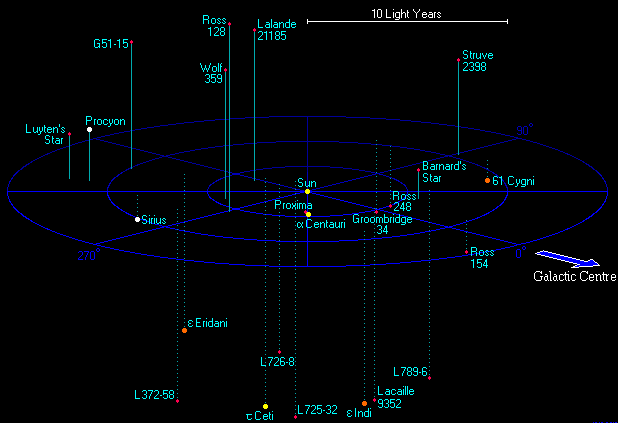We know that a
Cheetah can run 75 miles per hour.
And the
Speed of Sound is 760 miles per hour.
Only super fast jet planes can go faster than that.
And even faster is the
Speed of Light, 670 million miles per hour!
That's 670,000,000 miles per hour, way faster than a
cheetah or even the fastest jet plane ever made.
If you could travel as fast as the
Speed of Light and you went that fast for a whole year (365 days)
then the distance you traveled is called a
Light Year.
A
light year is a very very long distance.
To get some idea of how far it is, if a
cheetah ran as fast as it could for a whole year,
it could go all the way to the moon and back.
If a jet plane went as fast as the
speed of sound for a whole year,
it could make it to the moon and back 11 times,
but still couldn't reach the planet Mars or our Sun.
But if you went the
speed of light for a whole year,
you could go around the earth 277 million times.
That's 277,000,000, look at all those zeroes!
You could go to the planet Mars and back 98,000 times,
to the sun and back 35,000 times.
The farthest planet in our
solar system is Neptune,
and you could even go to Neptune and back 1,000 times.
So the
speed of light is super fast, and traveling that fast for a year is a super crazy big long distance!

(from: wikipedia -
light-year)





































